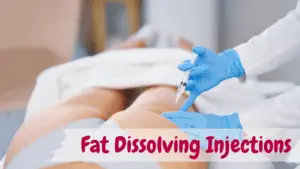PDO (polydioxanone) threads are a type of suture used in non-surgical thread lifts, a cosmetic procedure to lift and tighten sagging skin tissue. PDO threads can be divided into several types including mono, cog, and screw threads.
Care in the first 24-48 hours after treatment
The first 24-48 hours after a PDO thread lift are crucial for your recovery and the success of the procedure. Here’s a more detailed guide:
- It’s important not to touch your face more than necessary to avoid infection and not to disturb the threads. Avoid washing your face for the first day. If you need to clean it, use a gentle cleansing wipe or similar.
- As mentioned previously, avoid excessive facial movements such as smiling, talking excessively, or yawning widely for the first couple of days.
- Do not undertake any heavy physical activities that may cause excessive sweat or increase your blood pressure. It is also recommended to avoid bending over or lifting heavy objects.
- Apply Ice Packs can help with any swelling or bruising. Remember to wrap the ice pack in a cloth before applying to the skin to avoid frostbite. Do not apply the ice pack for more than 15 minutes at a time.
- You should sleep on your back with your head elevated, if possible, to minimize swelling. Avoid sleeping on your face or applying pressure to the treated area.
- Avoid alcohol, caffeine and spicy foods for the first few days as they can increase swelling.
- Do not use a sauna, steam room or undergo any other type of heat-related treatment.
- Do not take any blood-thinning medication (such as aspirin), unless it’s been prescribed to you by your doctor. If you feel any pain, use over-the-counter pain relief as advised by your doctor.
If you have any concerns or notice anything unusual, don’t hesitate to contact me.
Early side effects
PDO thread lift procedures are minimally invasive, but like any cosmetic procedure, they can come with certain side effects, especially during the early stages after the treatment. These early side effects can include:
- Some degree of swelling and bruising is to be expected after a PDO thread lift. This typically peaks a few days after the procedure and then gradually subsides.
- You may experience some pain and discomfort in the treated area. Over-the-counter pain medication, if approved by your healthcare provider, can help manage this.
- Many patients report feeling a sensation of tightness or pulling where the threads have been inserted. This is normal and should decrease as the treated area heals.
- A small amount of bleeding might occur right after the procedure.
- The treated area may appear red for a few days following the procedure.
- In the early stages, you might notice some asymmetry as swelling may not be uniform across the treated areas. This usually settles as the swelling goes down.
- Although rare, any procedure that breaks the skin has a risk of infection. Signs of infection could include prolonged redness, swelling, pain, or a fever.
- Some people may experience a temporary change in facial sensation due to swelling and the local anaesthetic used during the procedure.
If you notice any persistent or severe side effects, or if you’re concerned about your recovery process, contact me immediately. You should also ensure that you attend all scheduled follow-up appointments to monitor your healing process.
Delayed side effects
While PDO thread lifts are generally considered safe, there can be potential delayed side effects after the procedure:
- In some cases, the threads can migrate and become visible underneath the skin or even poke out from the skin. This may require removal or repositioning by a healthcare professional.
- If pain or discomfort persists for several weeks or months after the procedure, it could indicate an issue such as a poorly placed thread or an infection.
- The threads could shift position over time, leading to an irregular or asymmetrical appearance.
- While infection is more common in the early stages, it can also occur later on. If you notice signs of infection, such as increased redness, swelling, pus, or you develop a fever, contact me immediately.
- Very rarely, granulomas or nodules may form. These are inflammatory reactions that can occur in response to a foreign body, like the PDO thread.
- There can be hyperpigmentation (darkening of the skin) or hypopigmentation (lightening of the skin) around the area where the threads were inserted.
- In rare cases, scarring may occur at the insertion sites.
- While PDO threads are usually well tolerated, in rare instances an allergic reaction to the material could occur.
- Very rarely, the needle could injure a motor nerve, potentially causing temporary or, in very rare cases, permanent facial weakness.
Remember that these are potential side effects and not everyone who undergoes a PDO thread lift will experience them.
What to do if you get side effects?
If you experience side effects after a PDO thread lift, here’s what you should do based on the type of side effect:
- For minor side effects like swelling, bruising, and mild discomfort, over-the-counter pain relievers and cold compresses can help. These minor side effects should subside on their own within a week or two.
- If you experience increased redness, swelling, pain, pus, or develop a fever, you should contact me immediately, as these are signs of potential infection that might require treatment with antibiotics.
- If you notice the threads becoming visible under your skin or poking out, don’t try to remove or adjust them yourself. Contact me, I will advise you on the best course of action.
- If pain, discomfort, or a sensation of tightness persists for several weeks or becomes severe, reach out to me. It might be due to a thread that is poorly placed or other complications.
- If you notice an irregular or asymmetrical appearance that doesn’t resolve with time, consult me.
- If you have symptoms like difficulty breathing, hives, swelling of your face, lips, tongue, or throat, seek immediate medical attention. These could be signs of a severe allergic reaction.
- If you have prolonged numbness or changes in facial sensation, it could potentially indicate nerve involvement. You should report this to your healthcare provider as soon as possible.
It’s important to attend all scheduled follow-up appointments to monitor your healing process and address any potential side effects or complications. Don’t hesitate to get in touch with me for any concern.
When will you start to see results?
A PDO thread lift stimulates the body’s healing process, promoting the production of collagen and elastin, which are essential for skin elasticity and firmness.
After the procedure, you can observe an immediate lifting effect due to the mechanical action of the threads. However, the procedure’s full impact, which comes from new collagen and elastin formation, becomes evident over a few weeks to months.
Typically, noticeable results begin to appear around 6 weeks post-procedure, with the most significant improvement observed between 3 to 6 months as the new collagen develops around the threads, enhancing skin texture and firmness.
It’s important to note that results can be influenced by age, skin condition, lifestyle, and individual healing response. While the threads dissolve within 6 to 8 months, the treatment’s effects can persist for 1 to 2 years.
Stay Connected with me to understand the expected timeline and results tailored to your circumstances.
Next Steps
Your Result
Following the procedure, you should start to see visible results within 6 weeks with the most significant improvement observed between 3 to 6 months as the new collagen develops.
The overall effects of the treatment can last from 1 to 2 years, although this can vary depending on individual factors such as age, skin condition, lifestyle habits, and how your body responds to the treatment.
Expectations
While an immediate lifting effect can be noticed due to the mechanical action of the threads, the full effect of the procedure won’t be visible until your body has had time to produce new collagen and elastin.
The procedure generally improves skin texture, firmness, and volume. It’s important to discuss with your healthcare provider to align your expectations with the achievable results.
Skin Care
Maintaining good skincare practices post-procedure is crucial for prolonging the results.
- Keep your skin clean and moisturized.
- Apply sunblock daily to protect against UV damage which can degrade collagen faster.
- Depending on your skin type and specific needs, I will recommend certain skincare products or ingredients to enhance and extend the effects of the PDO thread lift.
- A diet rich in antioxidants, vitamins, and proteins can also help promote skin health and collagen production.
Factors affecting treatment duration
The duration of the effects of a PDO thread lift can be influenced by several factors:
- Individual Healing Response: People’s bodies heal at different rates and produce collagen and elastin at different speeds. This can influence how long the effects of the treatment last.
- Age: Younger individuals tend to produce collagen more quickly and in greater quantities than older individuals. Thus, the treatment effects may last longer in younger patients.
- Lifestyle Habits: Habits like smoking and excessive alcohol consumption can impair the healing process and collagen production, potentially shortening the treatment’s duration. On the other hand, maintaining a healthy lifestyle with regular exercise and a balanced diet can potentially extend the duration of results.
- Skin Condition: The initial condition of your skin can also impact the longevity of the treatment. Healthier skin usually responds better to the procedure.
- Sun Exposure: Excessive sun exposure can break down collagen faster and thus may reduce the longevity of the treatment effects.
- Care Post-Treatment: Proper aftercare, including gentle handling of the treated areas, avoiding strenuous activities, and good skincare routines can extend the duration of the results.
- Type of PDO threads used: Different types of threads (mono, cog, screw) may have slightly different durations of effect due to their distinct structures and mechanisms of action.
- Skill and Technique of the Practitioner: The technique used during the procedure, the number of threads placed, and the skill of the practitioner can all influence how long the effects of the treatment last.
Treatment recommendations to compliment your therapy
PDO thread lifts can be used in combination with other aesthetic treatments to complement and enhance results. Some treatments that can work well with PDO thread lifts include:
- Dermal Fillers: While PDO threads provide a lifting effect, dermal fillers can add volume, especially in areas like the cheeks, lips, and around the nose and mouth. They can be used together for a more comprehensive facial rejuvenation.
- Botulinum Toxin Injections (Botox): It is often used to reduce the appearance of wrinkles caused by muscle movement, such as frown lines, forehead lines, and crow’s feet. This can complement the lifting effect of PDO threads.
- Laser Treatments: Laser treatments can help with skin issues such as pigmentation, redness, or texture problems that aren’t addressed by PDO threads. They can also stimulate collagen production, reinforcing the effects of the thread lift.
- Chemical Peels/Microdermabrasion: These treatments can improve skin texture and tone, reducing the appearance of fine lines, acne scars, and sun damage.
- Radiofrequency or Ultrasound Treatments: Non-invasive treatments like radiofrequency or ultrasound (such as Thermage or Ultherapy) can heat the deeper layers of skin to stimulate collagen production. This can complement the collagen-stimulating effects of PDO threads.
- Platelet-Rich Plasma (PRP) Therapy: PRP involves using a person’s own blood plasma to stimulate collagen production and cell turnover. This can further enhance the effects of PDO thread lifts.
- Skin Care Routine: A good skin care routine with a focus on hydration, protection, and the use of anti-aging ingredients like retinoids, vitamin C, and peptides can complement the effects of the PDO thread lift.
It’s important to note that not all these treatments can be done at the same time, and they might need to be spaced out over several weeks or months. The best treatment plan will depend on an individual’s skin condition, treatment goals, and overall health.
How to maximize your results
To maximize your PDO thread lift results,
- Maintain a healthy lifestyle with balanced nutrition
- Regular exercise
- Proper hydration
- Good sleep
- Limit smoking and alcohol, which can negatively affect healing and collagen
- Follow a good skincare routine that includes cleansing, moisturizing, and daily sunscreen use
- Consider anti-aging products with ingredients like retinoids and vitamin C
- Protect your skin from UV radiation and adhere to aftercare instructions
- Avoiding strenuous activities shortly after treatment.
- Consider complementary treatments like dermal fillers or laser treatments to enhance results
- Attend all follow-up appointments for proper monitoring of your healing process
- Consume a diet rich in proteins and antioxidants to promote collagen production
Frequency of Treatment
The frequency of PDO thread lift treatments varies based on personal factors, including age, lifestyle, skin health, and desired outcomes.
The effects generally last from 1 to 2 years, and many patients choose to undergo a new procedure as these effects begin to fade. However, excessive frequency may lead to an unnatural appearance. A healthcare provider can offer personalized guidance on optimal treatment frequency, so it’s beneficial to maintain an ongoing relationship with a professional familiar with your skin condition and aesthetic goals.
When to get in contact
If you experience any undesirable side effects, or if you’re dissatisfied with the outcome or impact of the treatment, please don’t hesitate to reach out to me.
On the other hand, if you’re pleased with the treatment, we’d greatly appreciate it if you could share your positive experience with a Google review.




